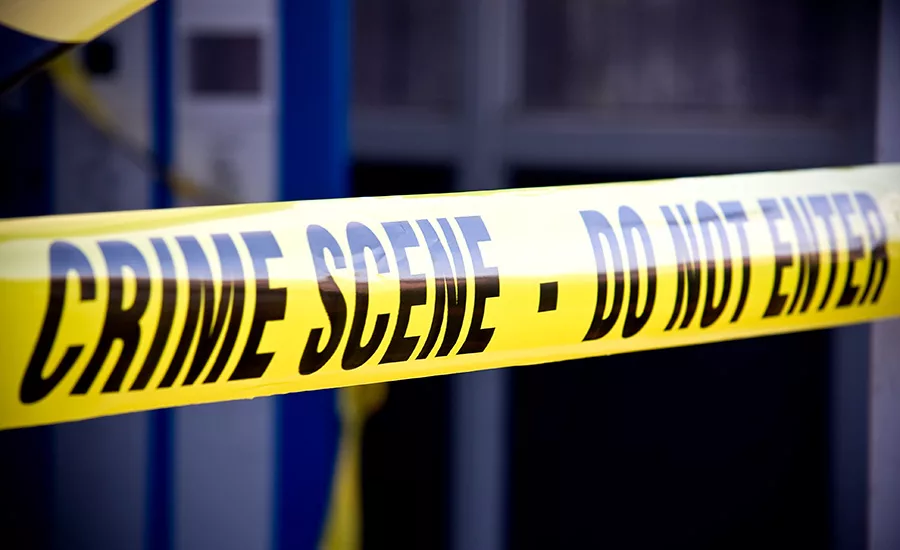How to Build a Better Ballistics Analysis Strategy
Three key components every law enforcement agency needs to ensure a successful workflow, identify and apprehend suspects, and prevent the next shooting.

One of the biggest challenges currently facing law enforcement is the continuing epidemic of gun violence afflicting many communities across our country. Gun crime impacts almost every major city in the United States. Unfortunately, as of late, it seems to be permeating more and more of the surrounding suburban and rural areas of those cities.
Urban police departments are struggling to keep pace with rising levels of gun crime, focusing their strained resources to address systemic violence associated with feuding drug gangs or criminal organizations battling over turf. While, in many instances, the availability of illegal firearms in the hands of violent criminals continues to fuel the surge in gun violence across neighborhoods in so many of our communities.
An analysis of shooting incidents in some of our most vulnerable communities by various research groups is also showing an even sharper uptick in gun-related violent crimes in various cities across the U.S. Currently, the Chicago Police Department’s most pressing priority continues to be the gun violence perpetrated by localized street gangs and career offenders in furtherance of their criminal activities. Even though it’s a high priority for the police department, the city continues to experience pockets of extreme firearms-related violence and, in many instances, encountering crime scenes with evidence of multiple shooters utilizing multiple firearms. Oftentimes, these crime scenes are littered with dozens of fired cartridge cases strewn about alongside victims, some innocent bystanders caught in the crossfire.
From practical experience, one thing is clear: unless we can collect and analyze timely intelligence related to ballistic evidence recovered at different crime scenes, we cannot begin to apply effective law enforcement programs and design new strategies to address the problem. Without comprehensive collection of ballistic evidence and timely dissemination of crime gun intelligence, we are destined to use inefficient work processes, resulting in misdirected and wasted resources. Agencies must rethink their strategy for gun-related crime investigations, which starts with ensuring a proper ballistics analysis workflow. Ballistics analysis is integral to connecting crimes and getting violent criminals off the streets. And in order to create a successful strategy, a law enforcement agency needs to include three crucial components to be successful.
Comprehensive Collection
Comprehensive collection – the foundation on which a successful ballistics analysis program is built – means that every fired cartridge case (FCC) recovered at any crime scene must be entered into a ballistics imaging system operated by a law enforcement agency. The entry of ballistic evidence into an imaging database should not be prioritized by the type of crime the evidence was recovered from. Every piece of ballistic evidence needs to be processed, whether it is from a minor incident or a violent crime.
Generally speaking, this protocol may seem contrary to an effective evidence processing program. However, for ballistic comparisons, it is critical to achieving the full potential of an effective ballistics program. For instance, intelligence gleaned from a “stop sign” shooting may yield clues in identifying a suspect in a drive-by shooting or a gun-related homicide. This recovered evidence may then help connect the crime to another scene. Information developed at connected crime scenes, such as video surveillance, phone records, or license plate readers, may provide an investigator with vital clues to help identify and remove a shooter from the streets.
For a ballistics analysis program to work to its fullest potential, every piece of recovered ballistic evidence must be accounted for. Comprehensive collection practices should be instituted within a law enforcement agency and encompass a collective team approach on the part of leadership, commanders, crime scene technicians, investigators, and responding patrol units. It includes an understanding of the value of comprehensive collection and why it is vital to a successful ballistic program. Leadership must recognize the value of comprehensive collection and its role in “connecting the shots.” It is understandable that resources are often strained in many agencies and decisions must be made as to what an agency can afford to implement certain programs, but implementing successful practices and programs to help curb the crimes may not be as resource intensive as one would commonly think.
Timeliness
Comprehensive collection may be the foundation on which the other pillars of a good ballistics analysis strategy rest, but all the evidence collection in the world is no good if it isn’t entered and analyzed quickly. Ideally, a fired cartridge case recovered at a crime scene, or a test fire from a recovered firearm, should be entered into a ballistics network within 24 hours. The results should then be provided to an investigator immediately afterwards. Many of the successful ballistics programs operating within the United States input, correlate, and disseminate information about ballistic matches within 48 hours.
The principal goal of any successful crime gun intelligence program is to provide information to an investigator to help identify a shooter and possibly prevent the next shooting. That is why it is vitally important to analyze and pass information about fired cartridge cases to investigating officers as quickly as possible so that a potential lead can be generated. Investigators can then use the crime gun intelligence derived from a recovered firearm and its connection to a shooting scene to not only identify a shooter, but also connect various shooting scenes, and potentially preventing the next.
A lead based on matching FCCs or test fires that is weeks or months old is less useful to an investigator due to the potential staleness of the information. Timeliness of the dissemination of that information is the basic tenant of any successful crime gun intelligence program.
Intelligence Layering
Comprehensive collection and timely dissemination of ballistics information are just two components of a successful ballistics analysis strategy. The third involves the layering of intelligence from other data sets or sources to aid in connecting crimes.
Some of the most successful police agencies in the U.S. investigating gun crime combine forensics, crime gun intelligence, and good old-fashioned police work to identify and apprehend the most violent perpetrators. These agencies are able to provide their investigators with immediate analysis of their recovered evidence and timely dissemination of vital intelligence associated with that evidence. A successful crime gun intelligence program then pulls in and analyzes information from multiple sources to include trace information on a recovered gun from police reports, license plate readers, social media, phone information, etc. By combining and analyzing these various sources, agencies can provide linkages between different crimes and which may help them develop leads to help identify a suspect. The most successful crime gun intelligence programs have all of this information under one platform and produces intelligence referrals in a simple, concise and logical report.
A Better Ballistics Analysis Strategy
Ballistics analysis is just one part of the intelligence cycle that helps detectives solve crimes and get more violent offenders behind bars. It is also critical that detectives have every possible piece of intelligence at their disposal to make connections, create leads and investigate suspects. When investigators can connect the dots between crime scenes and criminals, they can close more cases, interrupt future crimes and get more offenders off the streets. But, without placing equal importance on comprehensive collection, intelligence layering, and timely dissemination of information, a law enforcement agency’s gun violence strategy will not live up to its full potential.
Ideally, law enforcement agencies should employ a comprehensive solution that ensures that the above best practices exist as a part of its overall gun violence strategy. With all stakeholders – from officers on the scene to detectives in the field to technicians in the crime lab – working according to establish best practices, law enforcement agencies have a better chance of getting violent offenders off the streets and behind bars, reducing gun-related crimes and protecting their communities.
Looking for a reprint of this article?
From high-res PDFs to custom plaques, order your copy today!








